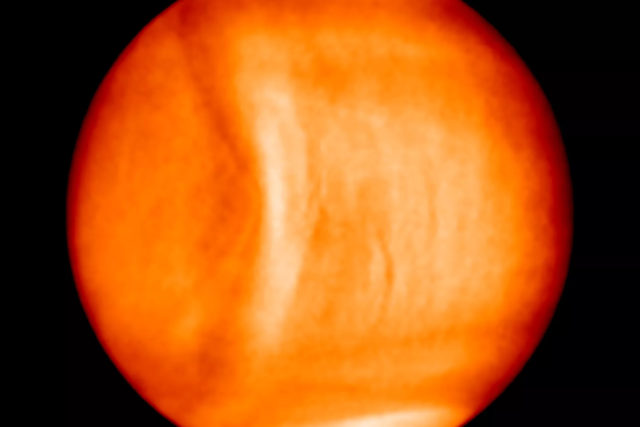Japanese Spacecraft Observes Gravity Wave In Venus’ Atmosphere
Venus’ atmosphere got itself a serious. Fucking. Gravity wave. We’re talking 6,000 miles-long serious.
The Japanese probe Akatsuki has observed a massive gravity wave in the atmosphere of Venus. This is not the first time such a wave was observed on the Solar System’s second planet, but it is the largest ever recorded, stretching just over 6,000 miles from end to end. Its features also suggest that the dynamics of Venus’ atmosphere are more complex than previously thought.
An atmospheric gravity wave is a ripple in the density of a planet’s atmosphere, according to the European Space Agency. (This isn’t a gravitational wave, which is a ripple in space-time.) We have these waves in Earth’s atmosphere, too; they interfere with weather and cause turbulence. Scientists have observed atmospheric gravity waves on Venus before: the European Space Agency’s Venus Express spotted several before the end of its mission in 2014. Since its initial observations, Akatsuki has spotted several smaller structures with its infrared cameras in April and May 2016.
Akatsuki spotted this particular gravity wave, described in a paper published today in Nature Geoscience, when the probe arrived at the planet on December 7th, 2015. The spacecraft then lost sight of it on December 12th, 2015, because of a change in Akatsuki’s orbit. When the probe returned to a position to observe the bow-shaped structure on January 15th, 2016, the bright wave had vanished.
What sets the huge December wave apart from previously discovered ones is that it appeared to be stationary above a mountainous region on the planet’s surface, despite the background atmospheric winds.
The study’s authors believe that the bright structure is the result of a gravity wave that was formed in the lower atmosphere as it flowed over the planet’s mountainous terrain. It’s not clear how the wave exactly propagates to the planet’s upper atmosphere, where clouds rotate faster than the planets itself — four days instead of the 243 days it takes Venus to rotate once.
The massive gravity wave might mean that the atmospheric conditions closer to the planet’s surface are more variable than predicted.




